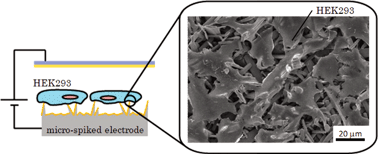Gene transfer device utilizing micron-spiked electrodes produced by the self-organization phenomenon of Fe-alloy
Abstract
In the diffusional phase transformation of two-phase alloys, the new phase precipitates form the matrix phase at specific temperatures, followed by the formation of a mixed microstructure comprising the precipitate and the matrix. It has been found that by specific chemical-


 Please wait while we load your content...
Please wait while we load your content...